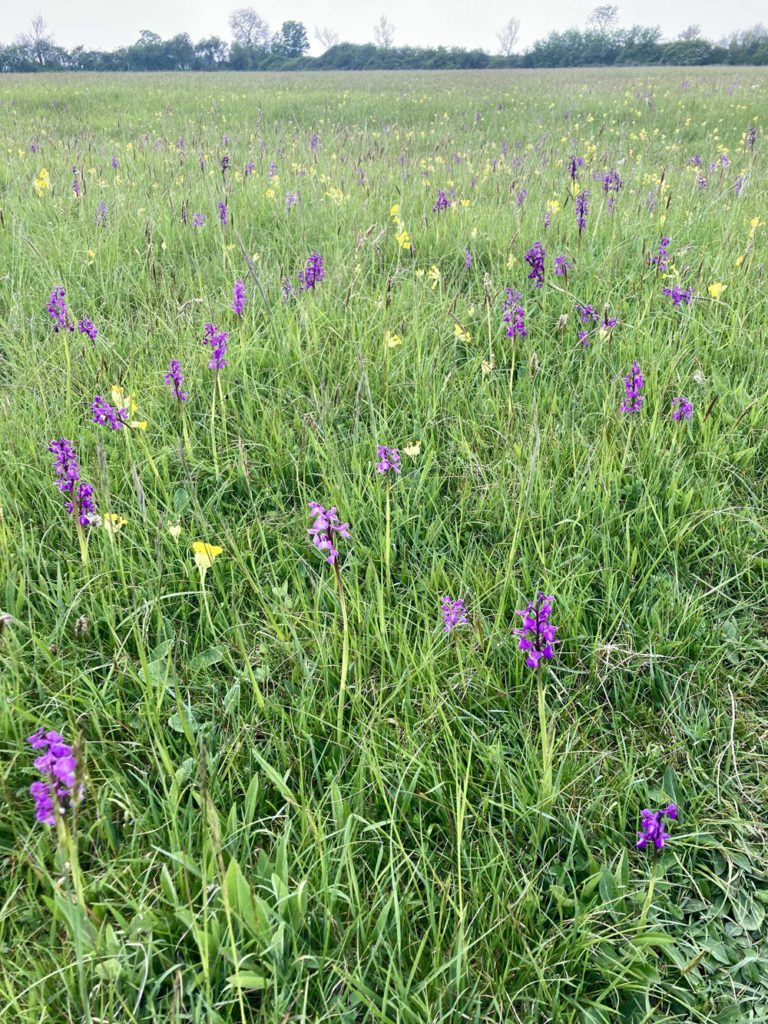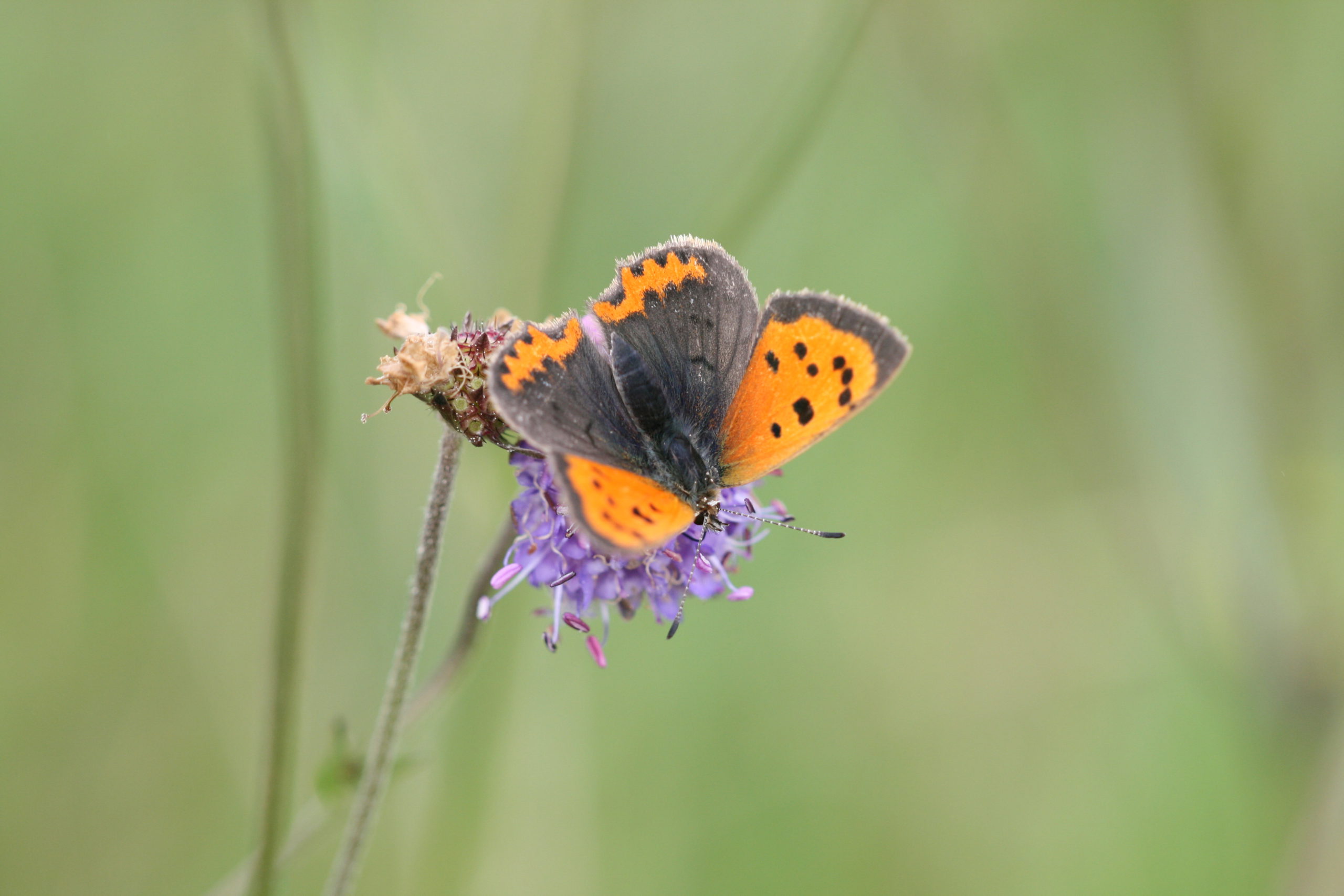MERRY’S MEADOWS – Saturday 18th May 2024

Field of Green-winged Orchids – photo by Kate Fortune Jones
It was a cool, overcast morning when 19 members and friends of the Society visited Merry’s Meadows on 18 May, but the sun appeared later to bring out the butterflies. Our visit was timed early in the year to catch the Green-winged Orchids at their peak, and we were not disappointed. Large numbers of the orchids were growing along the drier ridges in the first field, Cow Pasture Close, often in large groups, sometimes known as ‘swarms’. Flowering had started early in April this year but although many spikes had gone over there were still many thousands, in several colour variants of deep to pale purple, pink and even a few white blooms. The green veins were particularly visible on the hood of the pink and white flowers. Patches of orchids were also present in Donkey Paddocks and Long Field.

‘White’ Green-winged Orchid – photo by Kate Fortune Jones
The reserve is a Site of Special Scientific Interest because of its wildflower-rich lowland hay meadow grassland, where the traditional management of hay cutting and stock grazing has created a vibrant community of hay-meadow species. Cowslips, Pignut, Meadow and Bulbous Buttercups, Yellow-rattle, Bugle and Water Avens were all in flower, while Cuckooflower (known by many as Lady’s Smock) was flowering in the damper furrows. Adder’s-tongue, though in flower, had disappeared under the exuberant growth of Common Bird’s-foot-trefoil, Lady’s Bedstraw, Common Knapweed, Meadow Vetchling, Quaking-grass and other species that would be flowering later. At the bottom of Donkey Paddocks, the second meadow, we found Heath Spotted-orchid in flower and its close relative Common Spotted-orchid, from which it is told apart by the short central tooth on its more wavy lower lip. In this area of more acidic soil Tormentil was just starting to flower, and the leaves of Saw-wort and Dropwort showed that they, too, would soon be flowering profusely.
Although the A1 is quite close, there was nevertheless a sense of calm in the Meadows, and the birdsong seemed very loud, with Chiffchaff, Willow Warbler, Whitethroat, Lesser Whitethroat, Yellowhammer, Skylark, Dunnock, Song Thrush, Blackbird and Reed Bunting all heard almost continuously. Swift, Swallow and a Kestrel were all seen overhead.

Small Copper – photo by Peter Scott
Among the grasses, caterpillars of Six-spot Burnet moth seemed common, and when the sun came out in late morning our butterfly list soon contained Orange Tip, Brimstone, Peacock, Green-veined White, Holly Blue, Small Heath and several Small Coppers. On the walk back to the cars, a very early Painted Lady was sunning on the track.
We avoided Long Meadow, as it was thought a pair of Curlew might be nesting (this was proved to be true when a group counting the Green-winged Orchids disturbed the pair briefly a few days later).
Our thanks to owners Leicestershire and Rutland Wildlife Trust for their policy of open access to the nature reserve. My thanks to Linda Biddle for her species list from our visit.